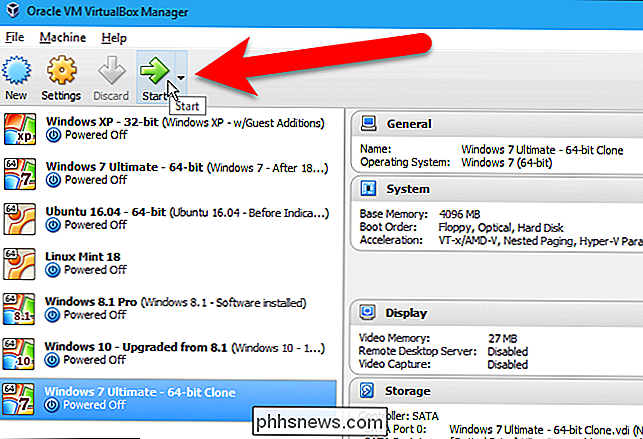There are 32-bit and 64-bit versions, depending on which Windows system you intend to use the tool on. Discuss: How to install Windows 10 on a Mac Sign in to comment.
System Requirements for Parallels Desktop 15
Supported Mac Configurations
| Minimum To run most applications such as Microsoft Office, accounting, trading, SAP, Matlab and more | Best Performance For graphics-intensive applications, high loads and running multiple virtual machines | |
|---|---|---|
| Processor | Intel Core 2 Duo, Core i3, Core i5, Core i7, Core i9, Intel Core M or Xeon processor | Intel Core i5, Core i7, Core i9 or Xeon processor |
| Memory | 4 GB of RAM | 16 GB of RAM or more |
| Storage | 500 MB for Parallels Desktop application installation Additional disk space for the guest operating system (at least 16 GB is required for Windows 10) | SSD drive |
| Graphics | Intel, AMD Radeon or NVIDIA | AMD Radeon Pro graphics card |
| Operating System | macOS Catalina 10.15 (when released) macOS Mojave 10.14 macOS High Sierra 10.13 macOS Sierra 10.12 | macOS Catalina 10.15 (when released) DirectX 11 requires at least macOS Mojave 10.14 but works best on macOS 10.15 Catalina. |
| Internet connection is required for product activation, updates and select features. | ||
Guest Operating Systems
- Windows 10
- Windows 8.1
- Windows 8
- Windows Server 2019
- Windows Server 2016
- Windows Server 2012 R2
- Windows 7 (SP0-SP1)
- Windows Server 2008 R2 (SP0-SP2)
- Windows Vista Home, Business, Ultimate and Enterprise (SP0-SP2)
- Windows Server 2003 R2 (SP0-SP2)
- Windows XP (SP0-SP3)
- Windows 2000 Professional SP4
- Windows 2000 Server SP4
- Boot2Docker
- Red Hat Enterprise Linux (RHEL) 7 and 6
- CentOS Linux 7 and 6
- Fedora Linux 30 * and 29
- Ubuntu 19.04, 18.04 LTS and 16.04 LTS
- Debian GNU/Linux 9 and 8
- Suse Linux Enterprise 15
- OpenSUSE Linux 15.1 and 15
- Linux Mint 19 and 18
- Kali 2019 and 2018
- Elementary 5
- Manjaro 18
- Mageia 7 and 6
- Gentoo Linux **
- Solaris 11 and 10 **
- openBSD 6 **
- FreeBSD 12 and 11 **
- openVZ 7
- eComStation 2 and 1.2 **
- ReactOS 0.4 **
- Android OS*
- macOS Catalina 10.15 (when released)
- macOS Mojave 10.14.x
- macOS High Sierra 10.13.x
- macOS Sierra 10.12.x
- OS X El Capitan 10.11.x
- OS X Yosemite 10.10.x
- OS X Mavericks 10.9.x
- OS X Mountain Lion 10.8.x
- OS X Lion 10.7.x
- OS X Lion Server 10.7.x
- Mac OS X Snow Leopard Server 10.6.x
- Mac OS X Leopard Server 10.5.x
- and many more...
- * — Only the version downloaded with help of the Installation Assistant with Parallels Desktop.
** — Parallels Tools are not available for this operating system.
Windows 7 32 Or 64 Bit For Mac Parallels Windows
Note: Parallels Desktop for Mac emulates PC hardware, so operating systems that are not present in this list can work as well. They are not on the list because we didn't test them in our lab yet or we found some critical issues. You can download the Parallels Desktop trial and install an operating system of your choice. If it doesn't work and you believe it should be supported, let us know at Parallels Forum.
Parallels Tools for Linux require X Window System version 1.15–1.20 and Linux Kernel version 2.6.29–5.1.
Moving Your PC?
PC system requirements to move your PC to your Mac (using Parallels Transporter Agent):
- 700 MHz (or higher) x86 or x64 processor (Intel or AMD)
- 256 MB of RAM
- 50 MB of available hard disk space for installation of Parallels Transporter Agent
- Ethernet or WiFi network adapter for migrating over network
- External USB drive for migrating via external disk
- Supported Windows: Windows 10, Windows 8.1, Windows 7, Windows Vista, Windows XP, Windows Server 2003 and Windows 2000 *
- * — To migrate Windows Vista or older, Transporter Agent from Parallels Desktop 13 should be used. Download the Parallels Transporter Agent.

The main difference between 32 and 64 bit at this point in time *would* be speed.
A 64-bit processor can handle larger chunks of data so of course it moves faster. Alas, you can install a 64 bit system, but most of the applications that would run on it still are in 32 bit so there's no real advantage - yet.
I suppose some high-end graphics and/or video production would run quicker.. IIRC Adobe may have already optimized it's Creative Suites for a 64-bit system, but on that I am not sure. The main drawback currently to 64-bit processing is that there just *isn't* a large number of applications available. The 32-bit platform has been in use for years so that's what the bulk is.
I cannot honestly say that one version is more stable than another, I just don't know. (Being an Apple user for EVER, the only problems I've encountered were ones of my own making.)


I will say that many device drivers for things like printers and hardware still run in 32-bit. Programming for 64 bit of course takes longer since rewriting the code entails more than just doubling the size of data packages that the processor will work with. I am currently running a Mac Pro and went so far as to install the latest Snow Leopard and could switch between 32 and 64-bit on startup but didn't see any difference with the speed of the applications I use.
I run my system in 32 bit since I can find more software for that. Time will change that however.
Windows 7 32 Or 64 Bit For Mac Parallels Run
What, if I may ask, are you looking to do with your Macintosh that requires you to install Windows?